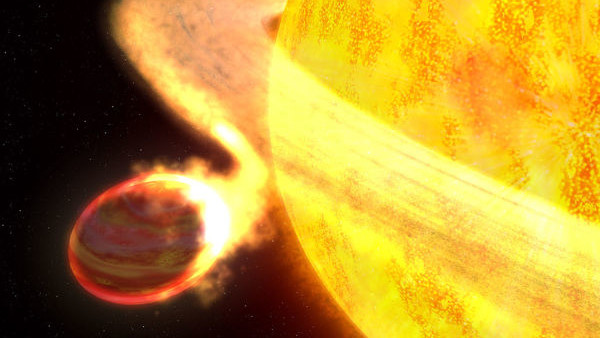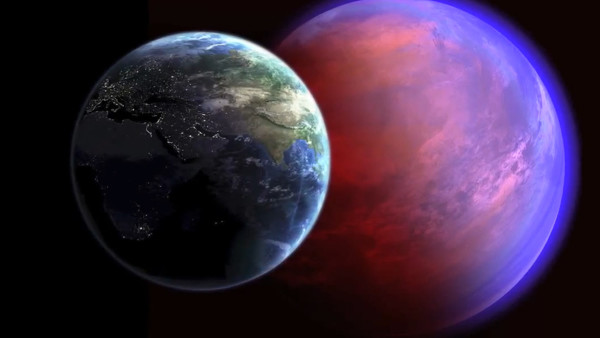9 Weirdest Alien Worlds We've Already Found
From naked giants to oozy diamonds, things get pretty weird in outer space.

Alien worlds are pretty, well, alien.
Given that the mere discovery of Pluto's mountains blew all of our minds not so long ago (they are pretty spectacular), it would seem that we're still having trouble getting our heads around the planets in our own solar system, never mind the weird, wonderful and whacky worlds out there in the wider galaxy.
In our search for exoplanets we tend to focus on the ones that are the most like earth, as they're the ones most likely to home the little green men that keep landing in our fields and frightening lone travellers with their probing. However, these Earth-like planets, by and large, tend to be a little boring. Smallish, roundish, not too hot, not too cold - all very nice for a day trip, but not a patch on a super-giant, oblong wandering planet where it rains diamonds. Sideways.
The universe is so big that there are probably infinite planets out there that completely defy imagination. Even the ones that we have discovered so far are pretty mind-blowing. Granted, some of them only exist theoretically at the moment, in the minds of theoretical astrophysicists, but remember, so did Pluto at one point...
9. The Oozy Diamond

It may sound like the name of a nightclub you end up in at 3am on a stag do, but the super-Earth exoplanet 55 Cancri E might well be an oozy diamond planet.
The planet orbits its host star at uncomfortably close quarters. Despite the fact that it is about twice the size of the Earth, 55 Cancri E's orbit is 26 times closer to its host star than Mercury - the closest one in our own solar system - and a year only lasts for 18 Earth days. It was originally thought, due to its surface temperatures and high density (7.8 times that of Earth) that it could well be made of super-compacted carbon, otherwise known as diamond.
But now the scientists are taking another look, and they think that the truth could be a whole lot weirder than that.
There are some who think that the elements found on the surface of 55 Cancri E would be pretty recognisable to Earthlings, including some water, however, the extreme pressure that they would be under on the surface of the planet would mean that they exist in a “supercritical” fluid state.
A supercritical fluid is a substance that is simultaneously liquid, gas and neither due to the immense heat and pressure it is put under. It also has a habit of basically melting anything it comes into contact with.
The rocks of 55 Cancri E could literally be oozing with a supercritical solvent as it screams around its frighteningly hot, close star with years lasting just under three weeks.
"Diamond Planet" sounded like a neat interstellar holiday destination, now, not so much.